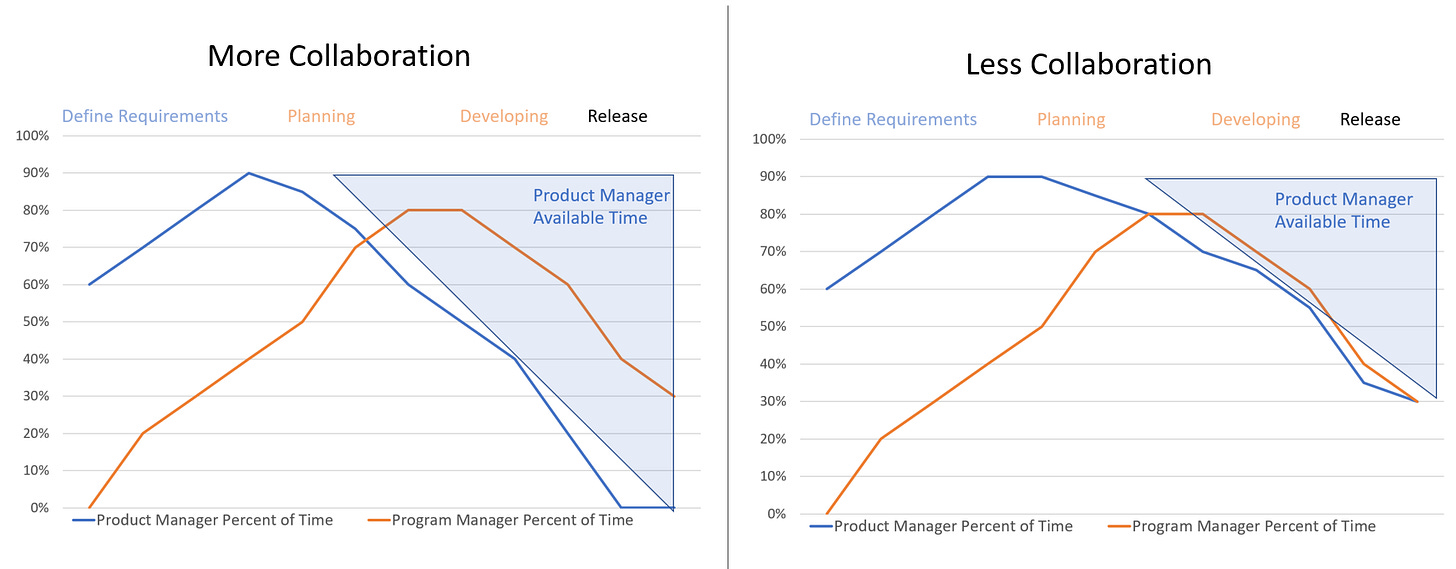Making Time for Product Management
Program management makes a difference
Program managers are the glue that hold together product and solution teams. Product managers that partner with their program management team are highly effective. What are some ways to partner with a program manager?
The Vital Role of a Program Manager
Besides keeping the product team on plan, the program manager knows gaps in the plan, key dependencies and tracks risks to the plan. Additionally, the program manager knows the roles of each team contributing to your product or solution. Your program manager is tracking details, anticipating issues and resolving problems behind the scenes.
A Little Technical Understanding is Enough
Many cloud-based solutions such as Software-as-a-Service (SaaS), Platform-as-a-Service (PaaS) and Infrastructure-as-a-Service (IaaS) have a lot of advanced technology, the program manager doesn't need deep technical knowledge to be successful. Being able to stay on track for cross-functional deliverables doesn't need technical depth. Understanding stakeholders' requirements and managing critical paths is a skill that takes years to develop. Strong program managers know that they can't be a technical giant while still managing a complex program.
What is Your Program Manager Doing?
Outside of leading product and solution teams and following up on action items, are there other things program managers do? Depending on the phase of a product or solution, program managers very busy heading off issues. A few things program managers do by phase:
Requirements phase: finding subject matter experts, driving involvement in the emerging program
Planning phase: defining a schedule with cross-functional buy-in
Development phase: coordination among the cross-functional teams and driving for agreed launch criteria
Release phase: documenting readiness status and checking for stakeholder issues
Additionally, your program manager is doing change management and managing dependencies continually.
Product Manager Collaboration
A strong partnership between a product manager and program manager is crucial to a successful product and solution team. Some best practices are:
Build a relationship through regular one-on-ones and discuss cross-functional priorities
Leverage the program manager to bridge the gap between technical and non-technical team members
Define and maintain program strategy together
Communicate to stakeholders and leadership teams with one voice
Prepare for and run product team meetings together
Product manager leads business and requirements. Program manager leads the delivery plan.
Each product manager and program manager work out their own best practices to fit their situation.
Conclusion
The relationship between the program manager and product manager is important through the product lifecycle. Joint leadership takes effort from product managers and program managers. These efforts result in effective and empowered product teams that get projects done.


